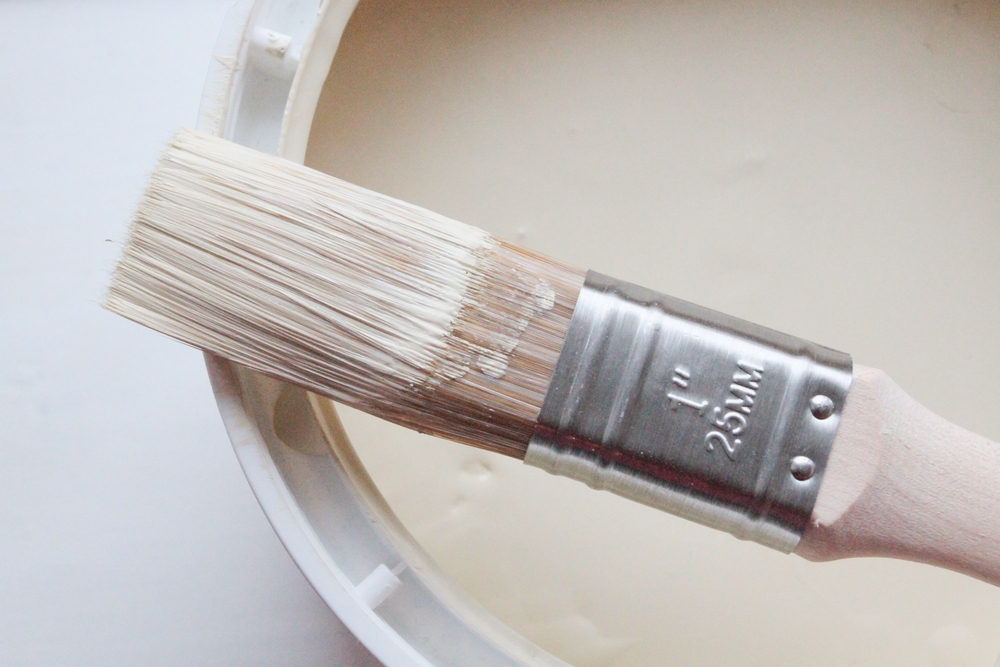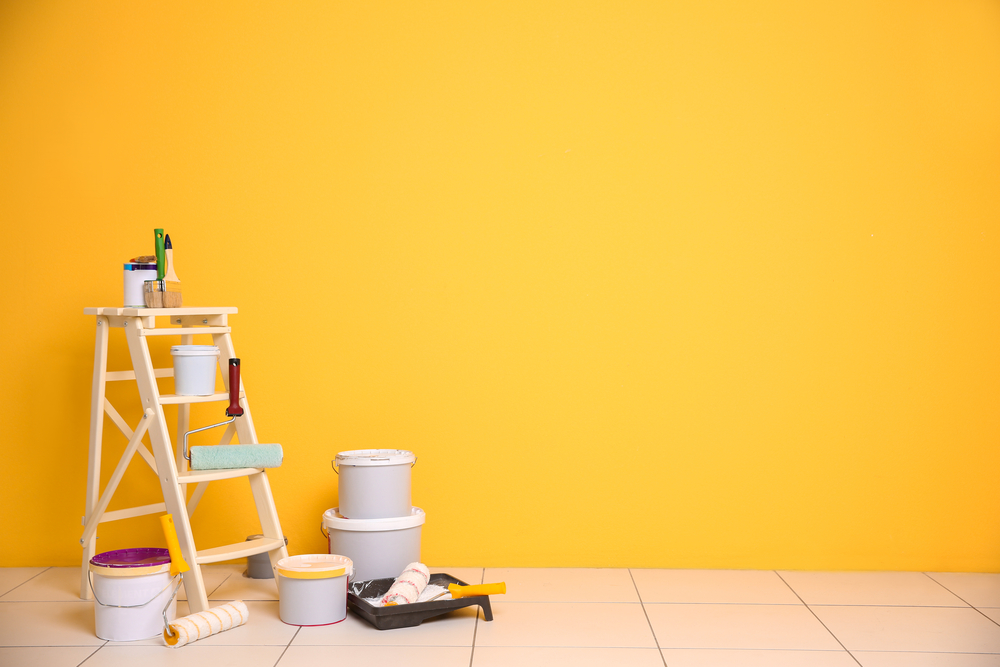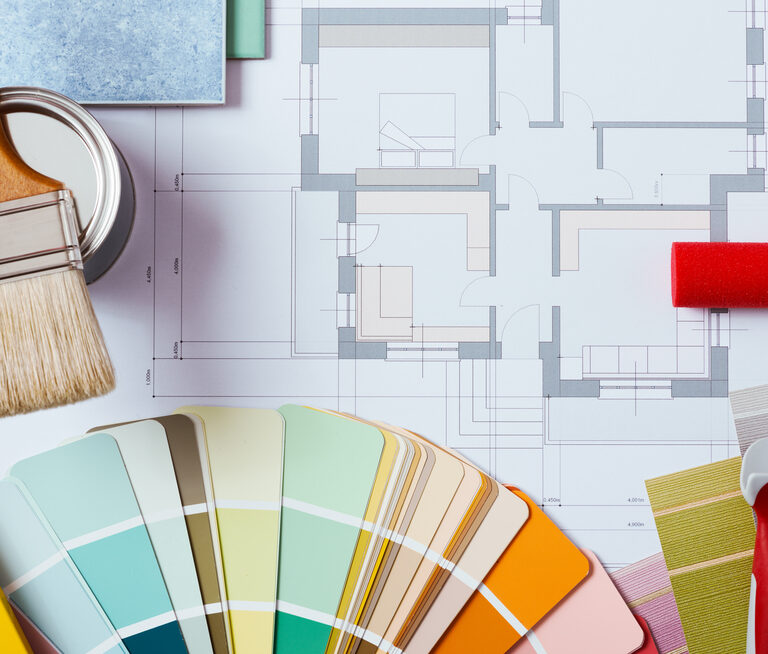In the wonderful world of interior painting, there are many options and customizations that you can choose from to truly personalize your paint to fit your design visions. One of the more important choices in your paint journey is selecting what type of finish you would prefer of a paint. The two most popular options for paint finishes – eggshell and satin – are typically at the forefront of this creative debate.
If you need help choosing the paint finish that is right for you and your home, look no further than this article. We’re here to help you understand the pros and cons of both eggshell and satin paint finishes, so you can make an easy decision about the paint finish best suited to your home.
Understanding Paint Finishes
There are five main types of paint finishes that you can choose from when selecting a paint, in addition to variations in paint bases and optional primers and top coats. Paint finishes are separated into these categories:
- Flat
- Satin
- Eggshell
- Semi-Gloss
- High-Gloss
These are differentiated based on their appearance (matte or glossy), their durability (resistance to stains and scuff marks), how easy it is to clean the painted surface and their best areas of use.
Certain finishes are better for certain areas in your home based on their appearance and durability qualities. For example, a satin finish might be preferable for your living room, since this is typically a high traffic area, and this paint can be easily cleaned.
The Pros and Cons of Eggshell

This introduction to eggshell finish paint will tell you all you need to know about its appearance, durability, and the best places to use eggshell finish paint.
Appearance
Paint with an eggshell finish is subtly textured – it is the perfect compromise between high-gloss and flat, matte finish paints, falling in the middle of the reflective spectrum. Eggshell finish has a soft sheen that can be emphasized with brighter lighting, and toned down with dimmer lighting. The lower luster allows it to give depth to rooms without appearing too shiny or too glossy.
Durability
Eggshell finish paint is more durable than flat or matte finished paints. It is resistant to most stains and scuff marks, and the paint can be easily cleaned off, while leaving its soft, smooth finish behind.
Where to Use
Paint with an eggshell finish is best used in medium to low traffic areas that need a slightly more durable paint, but are also not prone to picking up dirt and stains that easily. It can be perfect for a living room or bedroom, or anywhere that gets a lot of natural light, as the light will empathize the soft luster of the eggshell and give it an extra smooth, luminous appearance during the day.
You can also use eggshell finish paint on areas in your home that may have bumps or other small imperfections, as the slightly matte part of the texture of eggshell paint can completely cover and conceal these areas, drawing attention away from them.
Drawbacks
Eggshell paint may not be the best option for somewhere that is especially high traffic or somewhere that a lot of staining or moisture might occur, such as in a bathroom or a kitchen. This is because eggshell is not as durable as some other paint finishes, and could start looking rough over time.
Eggshell paint can also be hard to touch up, as there will be an obvious layer in the section where you added another coat of paint. This will cause the appearance to become slightly uneven, unless you repaint entire sections of the wall.
The Pros and Cons of Satin

These pros and cons of satin finish paint will give you all the information you need to know about the appearance, durability, and where to use satin finish paint for the best results.
Appearance
The next step up in glossiness from the eggshell finish, satin paint provides a smooth, pearl-like finish and a soft sheen. It has more of a glowing appearance than something that is semi-gloss or high-gloss (these paint types tend to shine), and is fairly reflective. Satin finish paints can add significant depth to a room or lighten up an area depending on the paint color chosen.
Durability
Because of its completely smooth, glowing finish, satin paint has quite a high durability. It can be easily wiped clean with a damp cloth, and is generally resistant to stains and scuffs. Satin finish paint can also be used on the exterior of your home due to this increased durability.
Where to Use
Satin finish paint is one of the most versatile paint types, which contributes to its popularity. This paint type can be used in all areas of the home, and even outside of the home, thanks to its high durability and resistance to things like mildew, scuffs, and stains.
The most popular areas to use satin finish paint include high-traffic areas such as kitchens, bathrooms, or children’s bedrooms. It can be used to emphasize architecture or incorporated as part of a design scheme when exclusively painted on wood trims, baseboards, or doorways, as this creates the appearance of a larger room in a subtle way.
Drawbacks
Even though the satin finish is quite durable and can be cleaned easily, cleaning it or scrubbing at the finish too hard can end up ruining the general sheen of the paint, leaving it looking lackluster and much less than glossy.
Satin paint is also prone to highlighting any imperfections in your wall, as the texture of it is more glossy and quite smooth. This can bring attention to bumps in the wall that may ruin the overall appearance of your paint job.
Making Your Decision
When making the final choice on which paint to use, you should take into account each finish’s appearance, durability, and drawbacks, and match these factors with your personal preferences. You should make sure to factor in which areas you wish to paint and match that up to the most recommended areas for each finish type, as this will help you come to a quicker decision on which finish to use.
You may also want to factor the price of each paint into your decision-making process. Eggshell paint is slightly cheaper than satin paint, coming in at 1 to 2 dollars less per gallon than satin finish the paint. A good rule to remember is that paint usually increases in price by a couple of dollars each step up the glossiness ladder you go —flat being the cheapest and high-gloss finishes being the most expensive paint type.
If you truly can’t decide between paint finishes, you may be able to have the best of both worlds by combining finishes. Eggshell paint is great for interior rooms or hallways, or anywhere that is medium traffic. You can then add satin paint onto the trims to give the appearance of a wider area and create more depth in your room.
Alternatively, you could decide to use satin finish paint in high-traffic areas, such as kitchens and bathrooms, and stick to eggshell paint in bedrooms, living rooms, and formal dining rooms. If you need help deciding how to plan out your painting jobs, you can always consult with an interior designer on the best options for your home.
A Paint Finish to Personalize Your Space
Painting your home, whether it’s just one room or the whole house, can be an overwhelming job full of many different choices. Out of these choices, which finish of paint to select can be particularly difficult, as you want to make sure the finish perfectly fits the area you plan to paint.
As long as you take into account each paint finish’s appearance, durability, and drawbacks, you should easily be able to make the choice between eggshell and satin paint, and settle on the paint finish that is the best option for personalizing your space.
